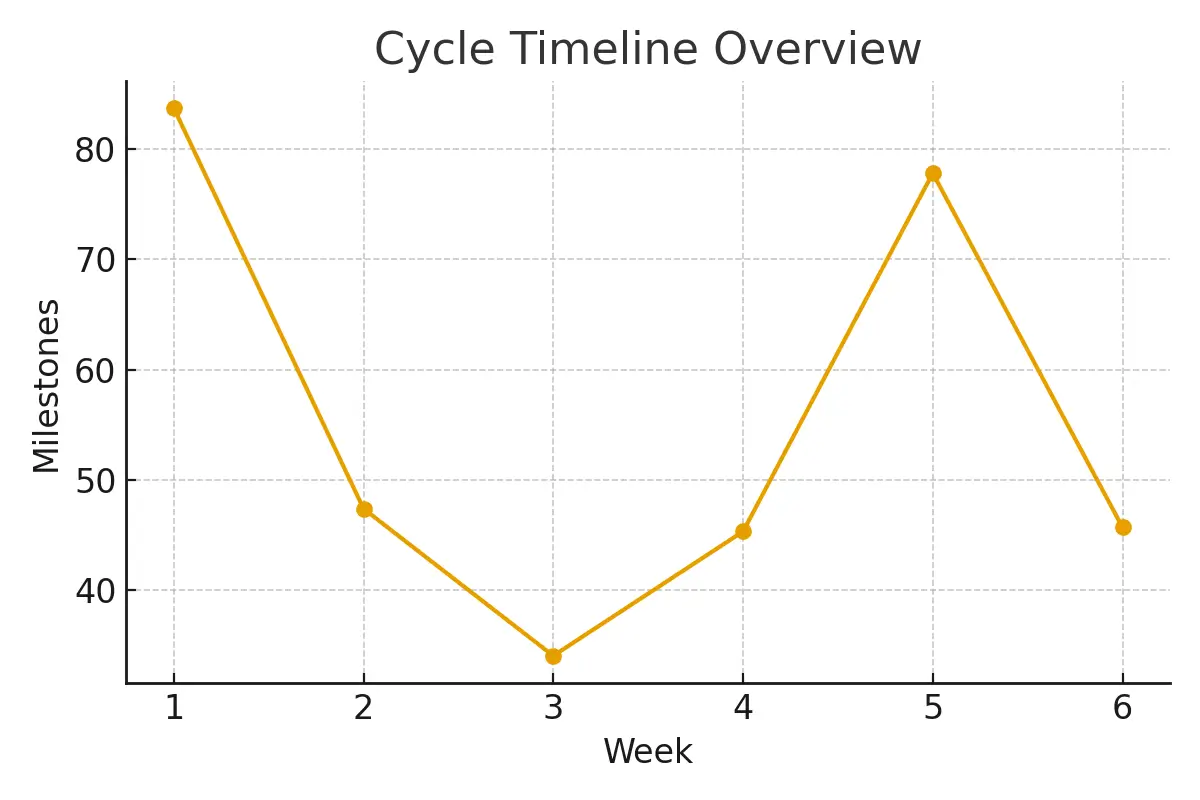
When it comes to IVF (in vitro fertilization), many people immediately think of high doses of fertility medications and multiple eggs retrieved in a single cycle. But for some, that intensity doesn’t feel right. Natural Cycle IVF takes a gentler path—using the body’s natural rhythm to collect the single best egg produced each month.
This approach has become more appealing to women who want fewer medications, reduced side effects, and a more natural process without compromising care quality. Understanding who benefits from this method—and when it makes the most sense—is key to making informed, confident fertility decisions.
What Is Natural Cycle IVF?
Natural Cycle IVF follows your body’s natural menstrual cycle instead of using high doses of stimulation drugs. The fertility team monitors follicle growth closely through ultrasound and blood tests. When the body naturally produces one mature egg, the timing is optimized for retrieval before ovulation.
After that, the process aligns with standard IVF steps—fertilization in the lab and, if successful, transfer of the embryo to the uterus.
Where It Fits in the Fertility Journey
This form of IVF often fits early in a fertility plan or for those who prefer minimal medical intervention. It’s an ideal first or intermediate step before moving into fully stimulated IVF cycles.
Patients with certain medical or personal preferences—such as avoiding hormone exposure or minimizing egg quantity—often see Natural Cycle IVF as a meaningful, balanced choice.
Who Is an Ideal Candidate?
Natural Cycle IVF isn’t for everyone. But it’s particularly well-suited for:
- Women with regular menstrual cycles and consistent ovulation.
- Those with low ovarian reserve, where stimulation yields few eggs anyway.
- Patients sensitive to fertility drugs or who prefer low-medication treatments.
- Individuals seeking a lower-cost IVF option with less medication expense.
- Couples wanting to keep things simple and physiologic, aligning closely with the body’s rhythm.
When to Escalate or Pause
Natural Cycle IVF may not always deliver the results expected, especially if cycles frequently cancel due to premature ovulation or poor egg quality. Clinics typically recommend escalating to mild or stimulated IVF after two to three natural attempts without success.
However, pausing treatment is also reasonable when emotional or financial strain builds. Protecting mental health during the fertility journey is just as vital as physical well-being.
Step-by-Step: How It Works
1. Cycle Monitoring
Frequent ultrasounds and hormone checks ensure precise timing as the dominant follicle develops.
2. Egg Retrieval
Once ovulation nears, a small surgical procedure retrieves the single egg using gentle anesthesia.
3. Fertilization and Embryo Development
The egg is fertilized in the lab, and embryologists monitor its growth for several days.
4. Embryo Transfer
If the embryo develops normally, it’s transferred into the uterus for implantation.
5. Luteal Support and Testing
Progesterone may be given to support implantation, followed by a pregnancy test about two weeks later.
Costs and Financial Transparency
The costs of Natural Cycle IVF are typically lower than stimulated IVF, mainly because there are fewer medications. Still, line items include:
- Monitoring visits and scans
- Egg retrieval procedure
- Laboratory fertilization and embryo culture
- Embryo transfer
- Optional add-ons such as genetic testing or embryo freezing
In NYC, patients might expect Natural Cycle IVF to range from $4,000 to $7,000 per attempt, depending on the clinic and optional services.
Pros and Cons
Advantages
- Minimal medication exposure
- Fewer side effects
- Lower cost per cycle
- Suitable for women with low ovarian response
- Natural synchronization with the body’s cycle
Disadvantages
- Only one egg per cycle
- Potential for cycle cancellation
- Lower per-cycle success rates compared to stimulated IVF
Still, the cumulative success rates improve across multiple cycles—especially when paired with precise monitoring and healthy lifestyle choices.
Outcome Drivers You Can Control
- Timing adherence: Show up for every scan and blood draw to protect ovulation timing.
- Lifestyle optimization: Maintain a balanced diet, moderate exercise, and sleep consistency.
- Emotional readiness: Support from a counselor or partner can make the process easier.
Meanwhile, certain factors—like egg quality or chromosomal health—are monitored but not directly controllable.
Key Questions to Ask Your Clinic
- What’s your success rate for Natural Cycle IVF by age group?
- How do you handle premature ovulation or cycle cancellation?
- Can I switch from natural to mild stimulation mid-cycle if needed?
- How transparent are your cost estimates?
- What follow-up care and emotional support are included?
Expert Insight
“Protect timing and keep plans simple—quality improves when noise goes down.”
— Clinical Team
This guiding principle reminds patients and clinics alike that fewer variables can often yield more consistent outcomes.
Patient Story
A couple in their early 30s came to the clinic unsure about their next step. After trying to conceive for over a year, they started Natural Cycle IVF with realistic expectations.
By aligning their schedule, simplifying communication, and trusting their care team, they felt calmer—and by their third cycle, they had a viable embryo and successful transfer.
Testimonials
“The steps finally made sense.” — A.&J., Manhattan
“Costs were clear; no surprise bills.” — L., Hoboken
“Nurses replied fast with practical coaching.” — K.&V., Queens
Frequently Asked Questions (FAQs)
Q: Is this medical advice?
Ans: No, this information supports clinic discussions, not a replacement for medical care.
Q: How many cycles should I plan?
Ans: Think in ranges. Success often accumulates over several attempts, not a single round.
Q: What drives cost most?
Ans: Medications, laboratory services, and total number of cycles contribute the most to your IVF costs.
Conclusion
Natural Cycle IVF offers a gentle yet scientifically grounded path through the fertility journey—especially for those seeking simplicity, lower intervention, and emotional balance. While it may not deliver instant success, it provides a sustainable approach for patients who value precision, comfort, and transparency.
For personalized guidance, transparent cost breakdowns, and supportive care in NYC, connect with Surrogacy4All. Their experienced team simplifies every step of your IVF plan—helping you move forward with clarity and confidence toward your family goals.
- Free 15-minute nurse consult (212) 661-7673
- Upload your lab results for a second opinion
- Get a cost breakdown tailored to your case

Dr. Kulsoom Baloch
Dr. Kulsoom Baloch is a dedicated donor coordinator at Egg Donors, leveraging her extensive background in medicine and public health. She holds an MBBS from Ziauddin University, Pakistan, and an MPH from Hofstra University, New York. With three years of clinical experience at prominent hospitals in Karachi, Pakistan, Dr. Baloch has honed her skills in patient care and medical research.




